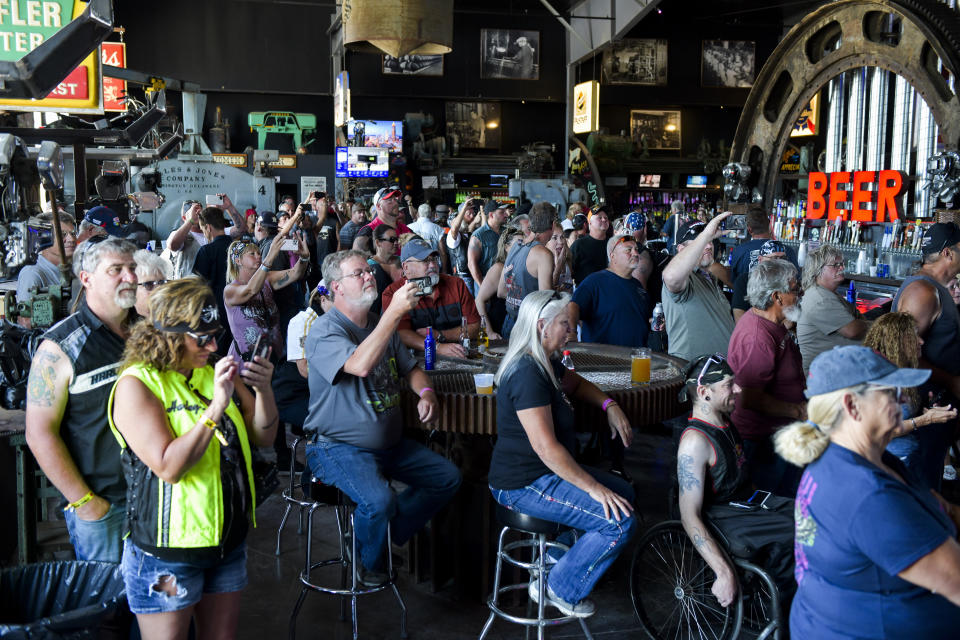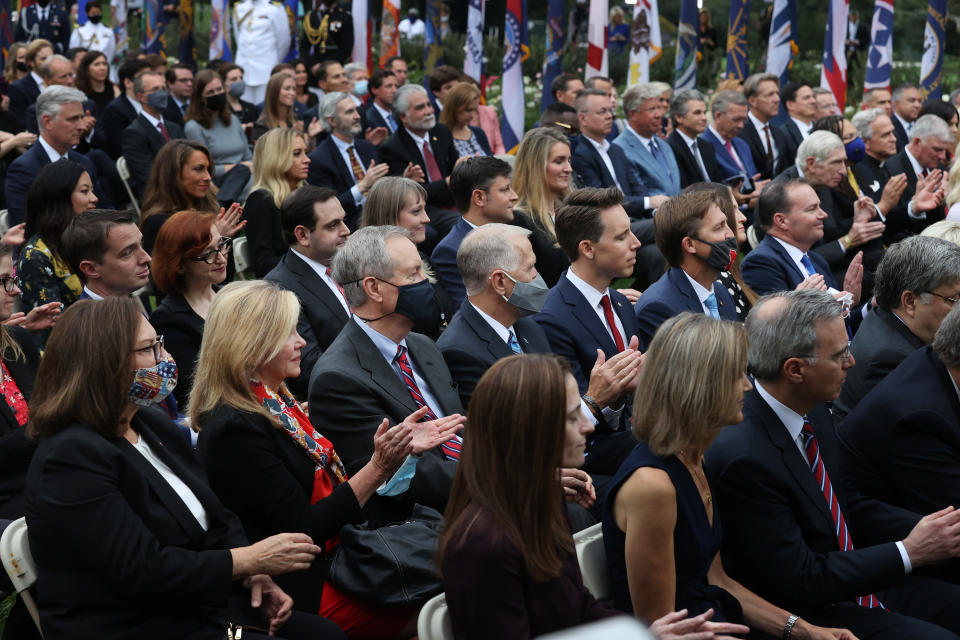COVID-19 superspreader events like Rose Garden, Sturgis Motorcycle Rally have experts worried
Weeks after the Centers for Disease Control and Prevention issued a warning about a June hockey game that was deemed a “superspreader event,” the Washington Post released a survey that suggests a 10-day motorcycle rally in early August may be fueling a surge in cases in many Midwestern states.
The term “superspreader” has historically been used to describe an individual who spreads a virus to more people than typical (anywhere between 1.5 and 3.5 people, according to estimates by the Imperial College London). The most famous superspreader is Mary Mallon, an Irish cook who earned the nickname “Typhoid Mary” after reportedly infecting more than 120 people with typhoid. Although the term is typically reserved for people who are unusually contagious, in the absence of a federal contract tracing program — which is how superspreaders are found — the term has taken on a new meaning. Now, events themselves are being classified as “superspreaders,” sometimes indicating an individual at the event who infected many and other times simply to label an event that led to many infections.

Dr. William Schaffner, an infectious disease expert at Vanderbilt University, welcomes the dual use of the term. “I think it has utility when communicating with the public, they understand what that means,” says Schaffner. “They get the sense that the Rose Garden event at the White House or this Sturgis motorcycle meeting was very dangerous because there was a lot of viral transmissions at that time and in that place.”
What is tougher to grasp, he says, is that superspreader events can happen anywhere. “Every time there's a group of people together, it could be a superspreader event,” says Schaffner. This is because while experts are able to identify super-spreading individuals after the fact, there are typically no signs that they are more contagious, especially when they are asymptomatic.
Experts are still learning about what makes super-spreading individuals more contagious but Schaffner says it likely boils down to the amount of virus that a person is carrying. “The virus goes down your throat and into your bronchial tubes where it multiplies, and some people, for reasons we don't understand, just produce much more virus,” Schaffner says. “So when you exhale microscopically it’s typically in small amounts, but these occasional superspreaders where the virus is really multiplying heavily in your throat and in your upper chest, they put out — as it were — a fog of virus.”
But superspreaders are only as dangerous as the environment they’re in, he says. “You can be a superspreader and be jogging all by yourself, out in the boonies and if there's nobody else around, you're not going to spread it to anybody,” he says. On top of not knowing who is more contagious, another dangerous aspect of superspreaders is that they may be able to spread it more easily — even in “fleeting interactions,” Schaffner says, instead of the sustained contact that spreading the virus typically requires.
It’s for this reason, he says, that hosting events right now is risky. But for those who are still moving forward with plans, he has three tips: “Make everybody wear a mask, bring attendance way down and spread people way far apart.”
With more than 8.3 million cases of COVID-19 in the U.S., a caseload higher than anywhere in the world, it seems clear that superspreader events are happening. As experts continue to urge individuals to refrain from gathering and wear masks whenever possible, here is a list of recent “superspreader” events that may have put attendees in danger.
June: Hockey game, Tampa Bay, Fla.
In its report on the June 16 hockey game — which took place in Tampa Bay, Florida — the CDC described how a single hockey player likely spread the virus to 14 others, including five players from the other team. The patient reportedly began feeling symptoms of the virus, including fever, cough and sore throat, one day after participating in the game and then tested positive for the virus. By June 21, five days after the game, the Florida Department of Health had confirmed 13 players and one ice rink employee with COVID-19. “The ice rink provides a venue that is likely well suited to COVID-19 transmission as an indoor environment where deep breathing occurs, and persons are in close proximity to one another,” the CDC writes. None of the players were wearing masks — either in the locker room or the rink.
August: Motorcycle rally in Sturgis, S.D.
The 80th Annual Sturgis Motorcycle Rally in South Dakota may turn out to be one of the biggest superspreader events the U.S. has ever seen. Over 300 cases of COVID-19 had been tracked to the event by September, including at least one death, numbers that experts say likely fall far below the number of those infected.
The 10-day event — which did not require masks — was expected to include 250,000 people, but estimates have shown that close to 500,000 likely attended. Due to a lack of contact tracing from officials in South Dakota, experts say the “true scope of infections” from the event is “unlikely to ever be known.” This week, the Washington Post conducted a survey with health departments in 23 states that found significant transmission connected to the rally, suggesting it may have caused an increase in COVID-19 cases that’s occurring now throughout the Midwest, including Wyoming, Montana and Minnesota.

September: Rose Garden celebration, Washington, D.C.
The Trump administration has repeatedly stated that it does not consider the celebration held in the Rose Garden, and inside the White House, on Sept. 26 to be a superspreader event. Still, in the wake of the celebration, more than two-dozen individuals who either attended the gathering or had close contact with President Trump have tested positive for the virus.
Dr. Anthony Fauci, the director of the National Institutes of Allergy and Infectious Disease referred to it as a superspreader event in an interview with 60 Minutes this week, saying he was “not surprised” that the President contracted COVID-19 after watching the gathering on TV.
September: Sweet 16 party, Suffolk Count, NY
Officials in Long Island, New York have linked at least 37 cases of COVID-19 from eight different households to a single birthday party in late September. The party, a “sweet 16” gathering, included more than 80 people and was held at a banquet hall in Suffolk County, New York. The venue was reportedly fined $10,000 for not following state restrictions on large gatherings, and 270 people were asked to quarantine. The guests are not believed to have been wearing masks or practicing social distancing.
For the latest coronavirus news and updates, follow along at https://news.yahoo.com/coronavirus. According to experts, people over 60 and those who are immunocompromised continue to be the most at risk. If you have questions, please reference the CDC’s and WHO’s resource guides.

